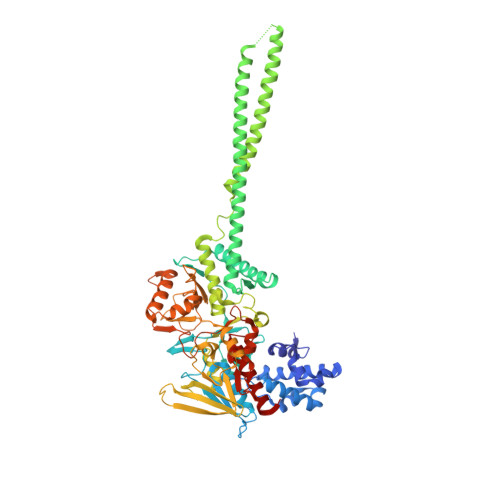Novel pharmacologic inhibition of lysine-specific demethylase 1 as a potential therapeutic for glioblastoma.
Shinjo, K., Umehara, T., Niwa, H., Sato, S., Katsushima, K., Sato, S., Wang, X., Murofushi, Y., Suzuki, M.M., Koyama, H., Kondo, Y.(2024) Cancer Gene Ther 31: 1884-1894
- PubMed: 39501082
- DOI: https://doi.org/10.1038/s41417-024-00847-8
- Primary Citation of Related Structures:
8INL - PubMed Abstract:
Lysine-specific demethylase 1 (LSD1/KDM1A) is a pivotal epigenetic enzyme that contributes to several malignancies including malignant glioma. LSD1 is a flavin adenine dinucleotide dependent histone demethylase that specifically targets histone H3 lysine (K) 4 mono- (me1) and di-methylation (me2) and H3K9me1/2 for demethylation. Herein we report the development of an LSD inhibitor, S2172, which efficiently penetrates the blood-brain barrier. S2172 effectively suppresses LSD1 enzymatic activity, resulting in the depletion of cell growth both in vitro in glioma stem cells (GSCs) (mean half-maximal inhibitory concentration (IC 50 ) of 13.8 μM) and in vivo in a GSC orthotopic xenograft mouse model. Treatment with S2172 robustly reduced the expression of the stemness-related genes MYC and Nestin in GSC cells. Consistent with this, chromatin immunoprecipitation-sequencing revealed a significant S2172-dependent alteration in H3K4me2/H3K4me3 status. Furthermore, we identified 284 newly acquired H3K4me2 peak regions after S2172 treatment, which were encompassed within super-enhancer regions. The altered H3K4me2/H3K4me3 status induced by S2172 treatment affected the expression of genes related to tumorigenesis. Our data suggest that targeting LSD1 with S2172 could provide a promising treatment option for glioblastomas, particularly due to targeting of GSC populations.
- Division of Cancer Biology, Center for Neurological Diseases and Cancer, Nagoya University Graduate School of Medicine, Nagoya, Japan.
Organizational Affiliation:




















